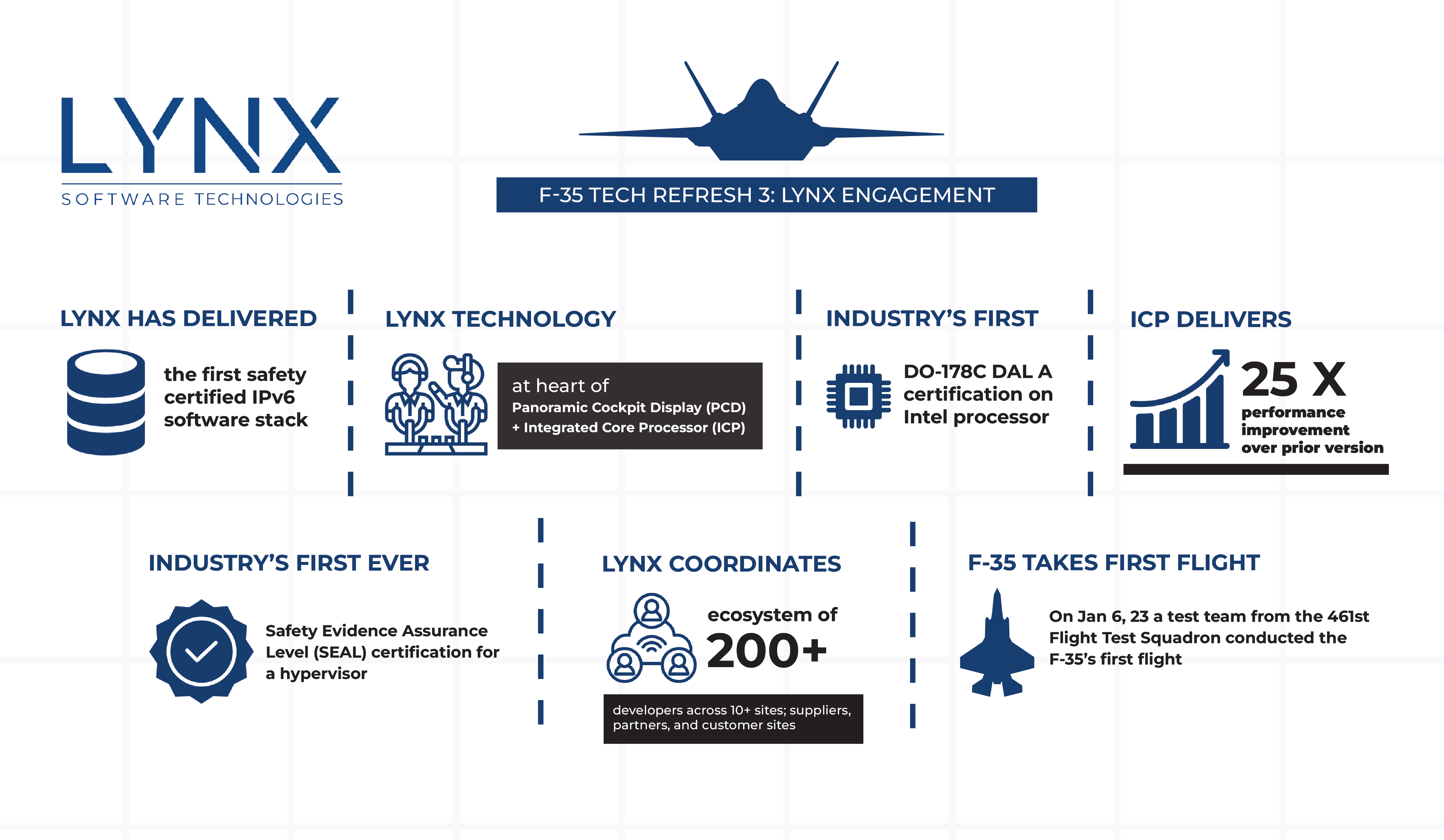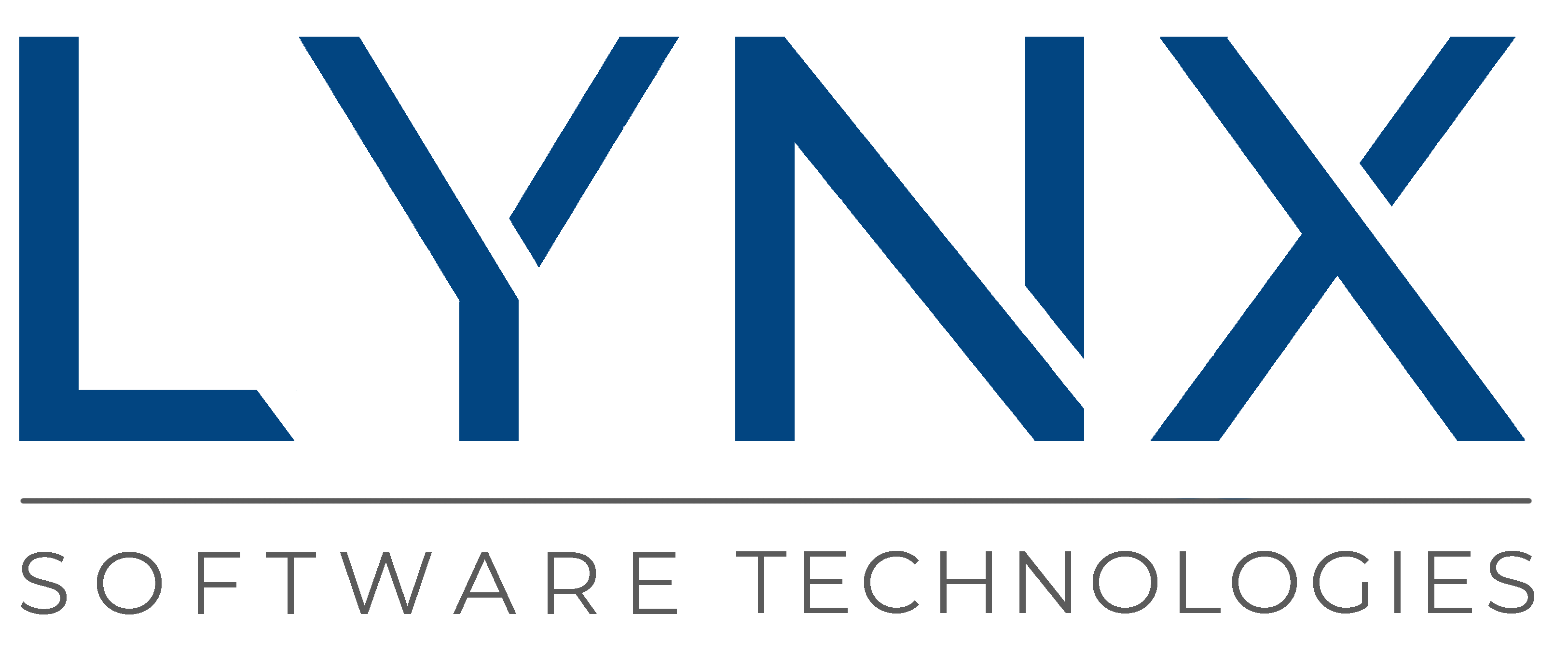MISSION CRITICAL EDGE CUSTOMER USE CASE
LOCKHEED MARTIN
CUSTOMER USE CASE
LOCKHEED MARTIN
WHO IS LOCKHEED MARTIN?
Lockheed Martin is a global security and aerospace company that employs approximately 116,000 people worldwide and is principally engaged in the research, design, development, manufacture, integration, and sustainment of advanced technology systems, products, and services.
JSF PROGRAM OFFICE ACCEPTS LOCKHEED MARTIN'S RECOMMENDATION FOR LYNX MOSA.IC
The F-35 Joint Strike Fighter Program Office accepted the recommendation from Lockheed Martin to adopt the LYNX MOSA.ic framework to support the upgrade of the mission system avionics for the F-35 Lightning II as part of the “Technology Refresh 3” (TR3) modernization program. Lynx's technology flew in the first test flight of the TR3 on January 6, 2023.
LYNX MOSA.ic is deployed in key components of the next-generation F-35 Lightning II avionics platform, including the Integrated Core Processor (ICP) developed by L3Harris. The ICP acts as the brains of the F-35, processing data for the aircraft’s communications, sensors, electronic warfare, guidance and control, cockpit, and helmet displays.
The TR3 program is expected to generate large reductions in production and sustainment costs at the same time as delivering significant increases in computing power. A key element of the program is the adoption of an Open System Architecture to efficiently enable the addition of future capabilities.

WHY IS IT IMPORTANT?
The F-35 Lightning II Program (the Joint Strike Fighter Program) is the US Department of Defense's focal point for defining the affordable next-generation strike aircraft weapons system. It replaces a wide range of existing fighter and ground attack aircraft for the United States, as well as a diverse set of its Allies including the United Kingdom, Italy, Canada, Australia, Germany, the Czech Republic, and the Netherlands.
WHAT CHALLENGES WERE BEING FACED?
There is a tremendous amount at stake when procuring software platforms. Layers of complexity abound, from CPU architecture to firmware, I/O services, standard APIs, and certification evidence. A vital element of the “Technology Refresh 3” (TR3) modernization program for the F-35 Lightning II avionics platform is the adoption of commercial-off-the-shelf (COTS) technology and an Open System Architecture as an approach to addressing this. This platform's Integrated Core Processor (ICP) processes data for the aircraft’s communications, sensors, electronic warfare, guidance and control, cockpit, and helmet displays.
WHY WAS LYNX SELECTED?
The F-35 Joint Program Office accepted the recommendation from Lockheed Martin to adopt the LYNX MOSA.ic software framework for this program as it enabled the TR3 subsystems to be cleanly architected from reusable software components that avoid proprietary dependencies. This approach also provides additional flexibility to integrate components of varying degrees of complexity and quality, including open source components, without undermining architectural assurance properties.
In addition to the technology benefits, adopting technology from Lynx for the TR3 program enables development, sustainment, and acquisition costs to be drastically reduced. It provides the necessary flexibility to implement system upgrades well into the future. It was also crucial for this customer to ensure that the configuration of the virtual machines and allocation of system resources were immutable; that is, there was no master log-in to reconfigure the platform once it was powered up. This was important to maximize system resiliency before migrating the real-time and safety-critical code that must be certified to Lynx's real-time operating system. With the industry's most POSIX-compliant RTOS, this simplified the software development process for the customer.
One of the other primary advantages LYNX offered was the substantial conformance of LynxOS-178 to POSIX standards. This is important as Lockheed, like many other customers, likes to develop software using Linux and then migrate.
For over thirty years, market-leading military and avionics companies have harnessed software technologies from Lynx to create their safety- and security-critical systems, and we are honored to have been selected to support this highly visible, strategic program.
This program has driven a number of firsts, including the delivery of the first DO178C DAL A certified hypervisor for deployment on an Intel processor. 
WHAT IS LYNX MOSA.IC?
LYNX MOSA.ic is a software framework for building and integrating complex multi-core safety- or security-critical systems using independent application modules. Its elegant, modular architecture enables developers to collapse development cycles when creating, certifying, and deploying robust platforms for crewed, autonomous, and increasingly connected systems.





